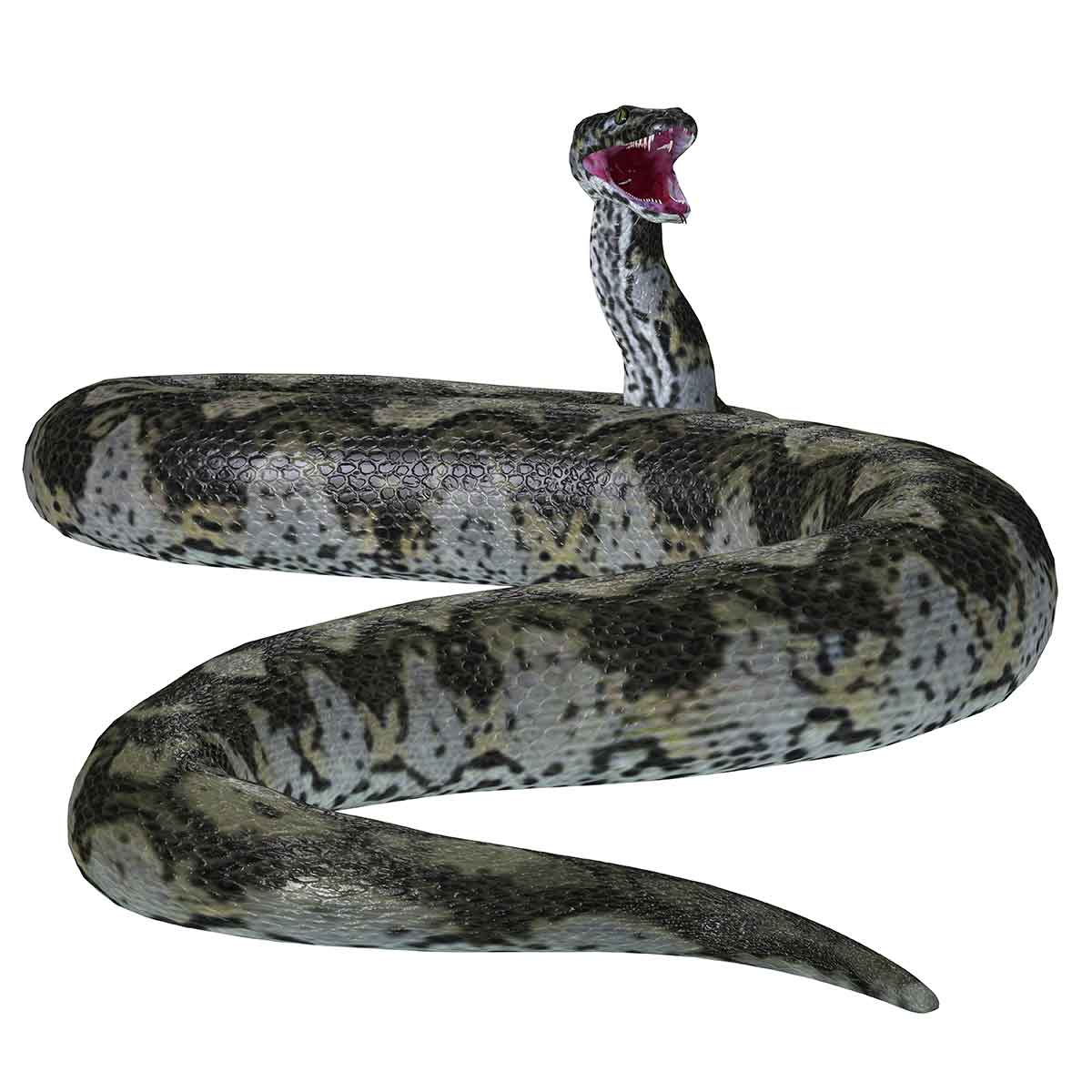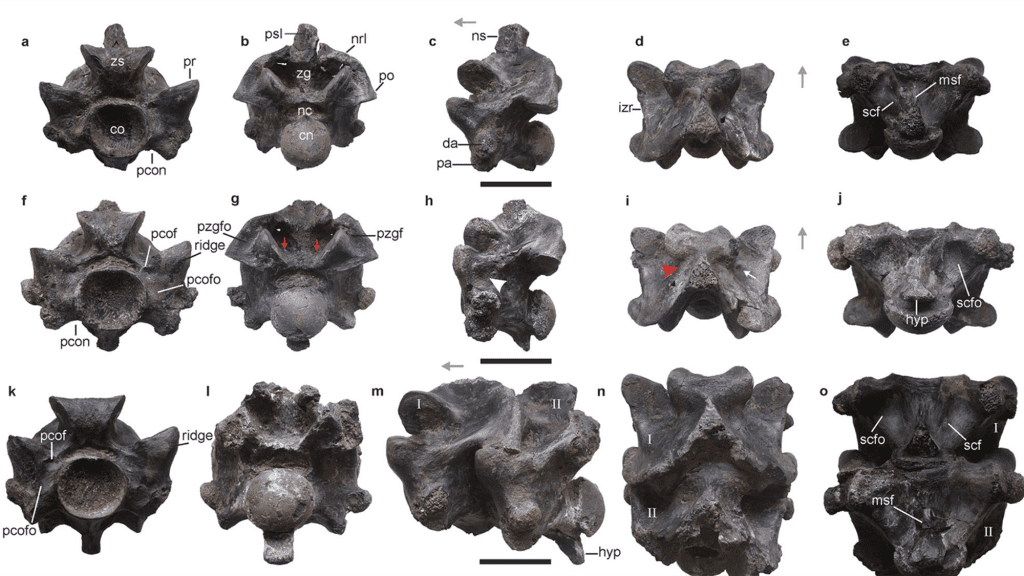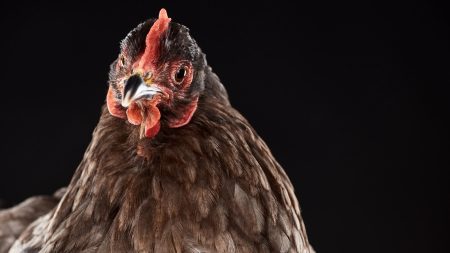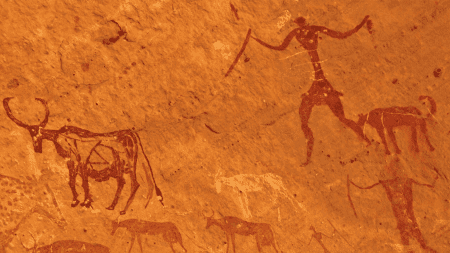Another day in science, another big, old snake discovery. Scientists in India found fossilized vertebrae from a snake that lived in the sub-continent about 47 million years ago and might have grown as long as almost 50 feet. The newly found, extinct species is called Vasuki inidicus, after the mythical serpent wrapped around the neck of the Hindu god Shiva, and is described for the first time in a study published April 18 in the journal Scientific Reports.
“Vasuki is an important piece of an ancient puzzle. It contributes to our understanding of this extinct group, and also to our understanding of large, apex, top-of-the-foodchain snakes in general,” says John Jascin III, a scientist at the University of Texas at Austin who studies reptiles but was not involved in the new study. Beyond reptiles, the fossil discovery provides broader clues to India’s climate tens of millions of years ago. “It’s also just a cool snake because it was so big,” he says, comparing its length to longer than that of a yellow school bus.
Sunil Bajpai, co-author of the study and a vertebrate scientist at the Indian Institute of Technology Roorkee, first found the fossilized snake remains in 2005 at a coal mine in western India. Over the course of a slow and careful excavation, 27 vertebrates–all likely to be from the same individual–were uncovered. By analyzing the size ratios of various parts of the vertebrae and the fossils' unique shapes and protrusions, Bajpai and his co-researcher determined the remains were that of a new species in the extinct family of Madtsoiidae, which were primitive snakes similar to boas and pythons.
The fist-sized fossils are second only in girth and width to those of Tintanoboa, another giant snake estimated to have lived about 58 million years ago in what is now present-day Colombia. Based on the age of the rock the newly described vertebrae were found in, the researchers date Vasuki to about 47 million years ago, just a few million years after the Indian tectonic plate began colliding with Eurasia. According to the new study, the timing supports the idea that Madtsoiids originated in India, and later moved to North Africa and southern Eurasia, where other, later fossil specimens have been found.

It’s a challenge to accurately figure out total species body size from a single individual’s incomplete skeleton. But using model equations incorporating data on current, living snakes and the known fossil record, Bajpai and his colleague, Debajit Datta–another vertebrate scientist at the same institution, estimate that V. indicus was somewhere between about 36 and and 49.9 feet (10.9 and 15.2 meters) long. The only known snake of comparable size was Titanoboa, currently the record-holder for the largest snake to have ever lived. Titanoboa clocked in at an estimated 35 to 50 feet long, with the mean estimate around 42 feet in length. The relative vertebrate sizes indicate that Titanoboa was a larger, thicker snake than V. indicus, yet it’s impossible to know exactly which snake species would’ve won the measuring contest.
“Based on the data at hand Vasuki was only slightly smaller in length than Titanoboa,” Bajpai and Datta communicate in a joint email to PopSci. “However, we cannot entirely rule out the possibility of Vasuki being slightly larger than Titanoboa, because the fossil vertebrae in our collection may not have come from the largest individual of Vasuki. The same, however, can also be said for Titanoboa. Since neither of these snakes are known from complete skeletons, we cannot say with certainty whether one was longer or wider than the other.”
“It’s a running joke [in paleontology], everyone always finds the biggest thing.”
Exact size estimates are likely to change as more fossils are found and more analysis is done. “Everything shrinks when the tape measure comes out,” says Alexandra Howard, a paleobiologist and herpetologist at Texas A&M University who was not involved in the new research. “It’s a running joke [in paleontology], everyone always finds the biggest thing,” she adds–and with more discovery and scrutiny the biggest size estimates tend to scale down. Nonetheless, Howard says the new discovery includes some very well-preserved fossils and is an interesting addition to our knowledge of ancient reptiles. “The past was full of giant snakes. That’s really cool,” she says.
And, either way, second place in size isn’t so bad, especially when you’re separated from your closest competitor by about 10 million years. Vasuki was probably a slow-slithering ambush predator that constricted its prey like a python, according to Bajpai and Datta. Based on morphology and the location it was found in, the researchers believe the monstrous snake was either terrestrial or semi-aquatic–living in marsh or coastal swamp. It was found in rock that also contains fossils of rays, sharks, bony fish, turtles, crocodiles, and primitive whales, Bajpai and Datta note–though what it ate is unclear.
Beyond its massive size, the new paleontological discovery is notable for what it can tell us about our planet 47-50 million years ago. “It’s an important discovery because it shows us another example of extreme gigantism in snakes… and because you can use snakes as a thermometer to reconstruct climates of the past,” says Jason Head, a vertebrate paleontologist at the University of Cambridge in England who was one of the primary researchers involved in discovering Titanoboa.
We know from geological and paleontological research that the time period, part of the Eocene Epoch, was warm, but Vasuki offers another data point indicating exactly what the climate may have been like where it was found. Snakes are ectotherms (commonly known as “cold-blooded”), so their body temperature and size is closely linked with the ambient temperature. The larger a snake is, the slower its metabolic rate, and so the warmer the climate must be for it to survive, Head explains. Estimates from modeling equations indicate that Vasuki’s habitat averaged around 28 degrees Celsius (82.4 degrees Fahrenheit), which is slightly warmer than the average annual temperature in the same region today.
The ancient climate data can aid in understanding the present and where we’re headed under current climate change, says Head. “Those are the hottest latitudes and the hottest intervals, that’s going to tell us a lot about what those places might be like in the future.”
While paleontologists keep exploring history, they may gain better insights into the future. Additionally, we can expect more discoveries of massive, ancient snakes. Head suggests that our knowledge of the past diversity of life on Earth is limited and there may be more huge snakes yet to be found.









